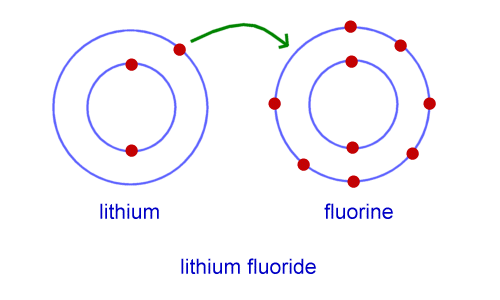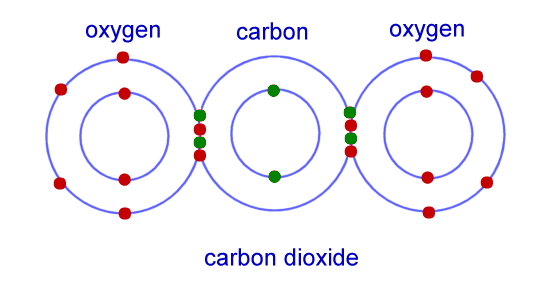Chemical Bonding
The world around us is made up of tiny units of matter called atoms. How these atoms stick together to form substances is called chemical bonding. | About Atoms Each element has its own unique atom made up of a specific number of protons in its nucleus called the atomic number. Each atom also has the same number of electrons as it has protons. Electron Shells The electrons orbit around the nucleus of the atom. They stay in layers called shells. Each shell can only contain a certain number of electrons: the first layer can hold two electrons, the second layer eight electrons, the third layer eighteen electrons, etc. |  |
All atoms would like to have a full outer shell, but the only elements to naturally have a full outer shell are the noble gases to the right of the periodic table. As a result, when atoms without full outer shells come into contact with other atoms, they tend to want to give up or gain electrons.
Valence Electrons
The valence electrons are the number of electrons an atom must lose or gain to have a full outer shell.
Atoms with a relatively empty outer shell will want to give up electrons. For example, if an atom has 1 electron out of a possible 8 in its outer shell, it will want to give up that electron so its outer shell is now full.
Atoms with a relatively full outer shell will want to gain electrons to fill up the outer shell. For example, an atom with 6 of 8 electrons in its outer shell will try to gain 2 electrons so its outer shell is full.
Ionic Bonding
Ionic bonding occurs when different elements trade electrons such that both elements now have a full outer shell.
Example:
Here is an example showing lithium (which has 3 electrons and 1 in the outer shell) and fluorine (which has 9 electrons and 7 in the outer shell) trading an electron to form LiF or lithium fluoride. This is called an ionic bond.

Example of ionic bonding
Covalent Bonding
In covalent bonding electrons are shared between atoms rather than traded in order for the atoms of both elements to gain full outer shells. Electrons are always shared in pairs.
Example:
An example of covalent bonding is the molecule of carbon dioxide. In this example carbon has 4 of 8 electrons in its outer shell and oxygen has 6 of eight electrons. By combining two oxygen atoms with one carbon atom, the atoms can share electrons such that each atom has a full outer shell.

Example of covalent bonding
Interesting Facts about Chemical bonding
- Because noble gases have a naturally full outer shell they seldom react.
- In metallic bonding a large number of atoms lose their electrons.
- Ionic bonding is mostly formed between metals located at the left side of the periodic table.
- Atoms in molecules are held together by the attraction between the nucleus and the shared electrons.
Комментариев нет:
Отправить комментарий